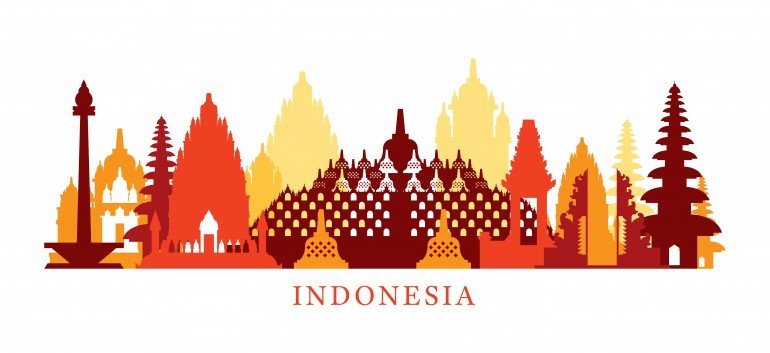Indonesia, officially the Republic of Indonesia, is the largest archipelago in the world, consisting of over 17,000 islands, with around 6,000 of them inhabited. It is located in Southeast Asia and Oceania, between the Indian and Pacific Oceans. With a population of over 270 million people, Indonesia is the fourth most populous country and has the largest Muslim population globally. Jakarta, its bustling capital, is the political, economic, and cultural heart of the nation.

Historical Background
Indonesia's history is a tapestry of ancient civilizations, powerful kingdoms, and colonial influences. The archipelago was an essential part of the maritime Silk Road, facilitating trade between East and West. Ancient kingdoms like Srivijaya and Majapahit were known for their power and cultural achievements, influencing the region significantly.
Colonialism began in the early 16th century when European powers, particularly the Dutch, sought control over the lucrative spice trade. Indonesia remained under Dutch control for over three centuries, except for a brief period of British rule. The struggle for independence, led by figures such as Sukarno and Hatta, culminated in the proclamation of independence on August 17, 1945, following the end of World War II.
Geography and Climate
Indonesia's geography is incredibly diverse, featuring volcanic mountains, dense rainforests, vast beaches, and fertile agricultural lands. It is home to some of the world's most active volcanoes, including Krakatoa and Mount Merapi. The islands of Java, Sumatra, Borneo (shared with Malaysia and Brunei), Sulawesi, and New Guinea (shared with Papua New Guinea) are the largest and most significant.
The country's climate is tropical, with a wet and dry season. The wet season, from November to March, brings heavy rains, while the dry season, from April to October, is characterized by high humidity and warm temperatures. This climate supports Indonesia's rich biodiversity, making it one of the world's megadiverse countries.
Economy
Indonesia's economy is the largest in Southeast Asia and is classified as an emerging market and developing economy. It has a mixed economy, with significant contributions from agriculture, manufacturing, and services. The country is a major global producer of palm oil, rubber, coffee, cocoa, and spices.
The industrial sector includes automotive, electronics, textiles, and mining, with Indonesia being one of the world's leading exporters of coal and natural gas. In recent years, the services sector, particularly tourism, banking, and telecommunications, has shown substantial growth, driven by a young and tech-savvy population.
Culture and Society
Indonesia's cultural landscape is as diverse as its geography. The country is home to hundreds of ethnic groups, each with its own language, customs, and traditions. The Javanese are the largest ethnic group, followed by Sundanese, Malays, and Madurese. The national language, Bahasa Indonesia, unites this diverse nation, while regional languages are also widely spoken.

Indonesian cuisine reflects its multicultural heritage, with influences from Chinese, Indian, Middle Eastern, and European cuisines. Dishes like nasi goreng (fried rice), satay (skewered meat), and rendang (spicy beef stew) are popular both domestically and internationally.
Traditional arts, including dance, music, and crafts, play a significant role in Indonesian culture. The wayang kulit (shadow puppet theater) and gamelan (traditional orchestra) are iconic cultural expressions. Additionally, Indonesia has a thriving contemporary arts scene, with contributions to literature, film, and fashion.
Challenges and Opportunities
Indonesia faces several challenges, including income inequality, corruption, environmental degradation, and infrastructure deficits. The country is also prone to natural disasters, such as earthquakes, tsunamis, and volcanic eruptions, due to its location on the Pacific Ring of Fire.
Despite these challenges, Indonesia has immense opportunities for growth. Its strategic location, vast natural resources, and large, youthful population provide a strong foundation for economic development. Initiatives like the "Making Indonesia 4.0" roadmap aim to transform the country into one of the world's top ten economies by 2030.
Conclusion
Indonesia is a vibrant and dynamic nation, marked by its diverse cultures, rich history, and economic potential. As it navigates the complexities of the modern world, Indonesia's unique blend of tradition and innovation will continue to shape its path forward. With its strategic importance in Southeast Asia and beyond, Indonesia remains a key player on the global stage, offering a mosaic of experiences and opportunities to its people and the world.







